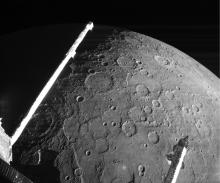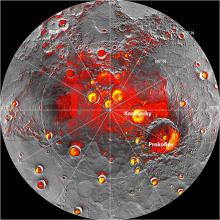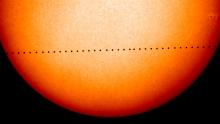Listen to today's episode of StarDate on the web the same day it airs in high-quality streaming audio without any extra ads or announcements. Choose a $8 one-month pass, or listen every day for a year for just $30.
You are here
Morning Mercury
Mercury’s appearances in our sky are like a game of whack-a-mole. First, the planet pops into view in the morning sky, then it ducks into the Sun’s glare, then it pops up in the evening sky, and so on. It never stays in view for long – no more than a few weeks, and often only a few days. So you have to strike fast to catch it.
This is one of its morning pop-up times. Mercury is quite low in the southeast as the dawn twilight gets brighter, so you need a clear horizon to see it. And although it looks like a fairly bright star, it can be hard to spot against the bright sky.
Mercury pops in and out of view so often because it’s the closest planet to the Sun, while Earth is the third planet. As a result, Mercury stays close to the Sun as seen from Earth – it never climbs very high into the sky. And Mercury’s tighter orbit means that it crosses between Earth and the Sun, or behind the Sun, every few months. That carries it from morning to evening and back again in a hurry, leaving little time to catch it.
Mercury is in better view tomorrow because it has some bright companions. It’s close to the upper left of the crescent Moon. Venus, the brilliant “morning star,” is high above the Moon. And Antares, the brightest star of the scorpion, is to the lower right of Venus. And although the Moon will have dropped from view on Wednesday, Mercury will remain in decent view for another week or so.
Script by Damond Benningfield





